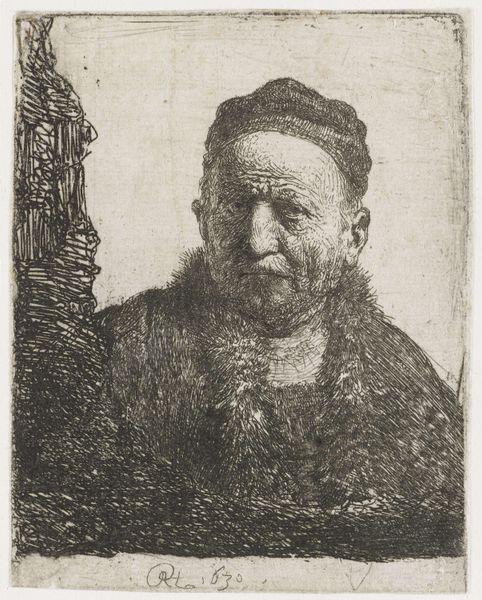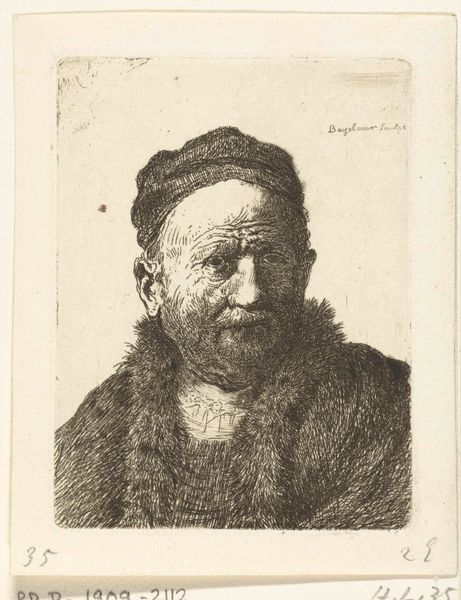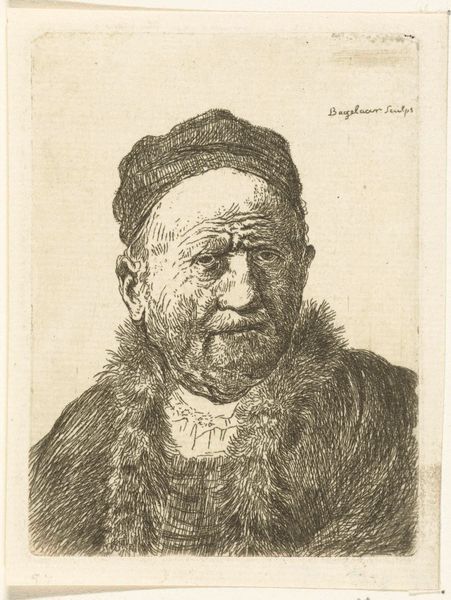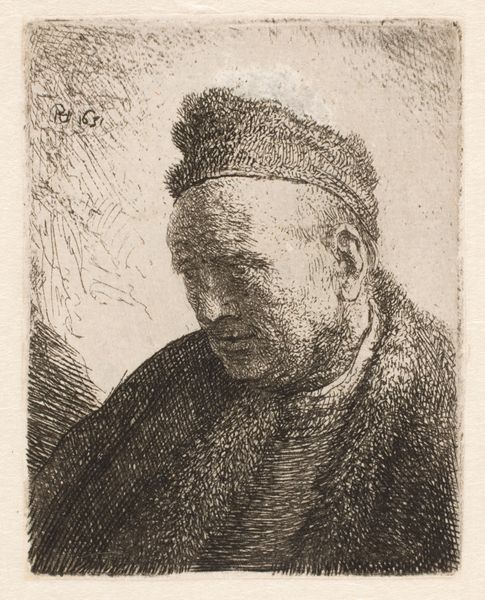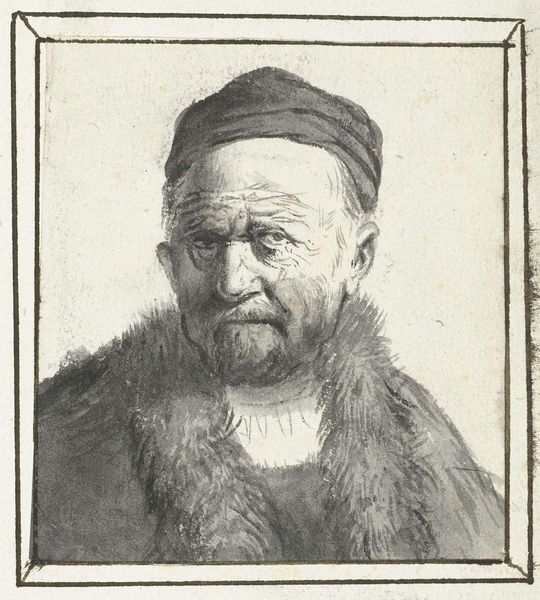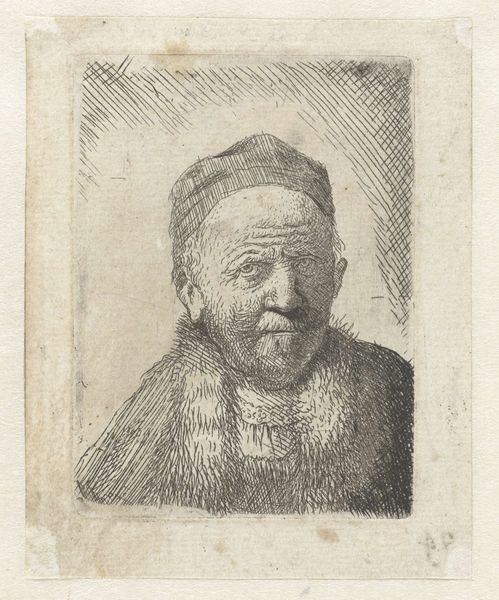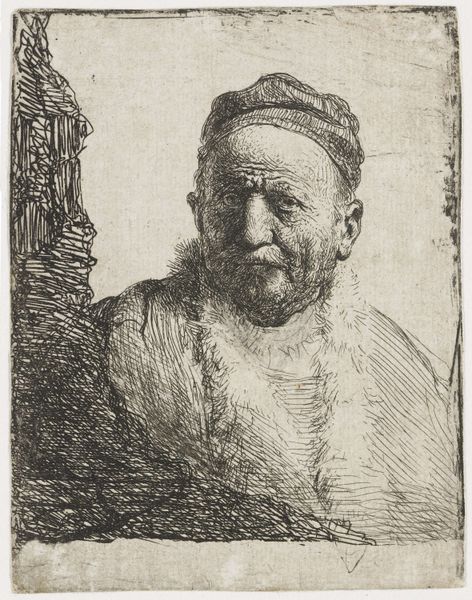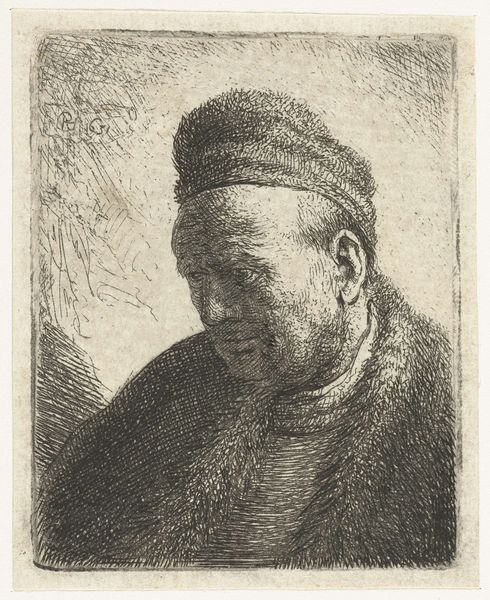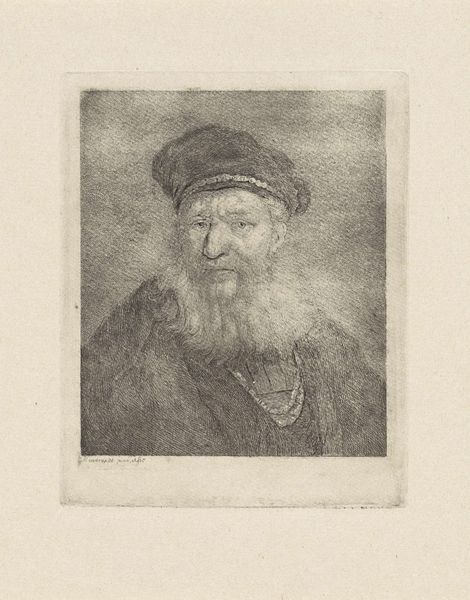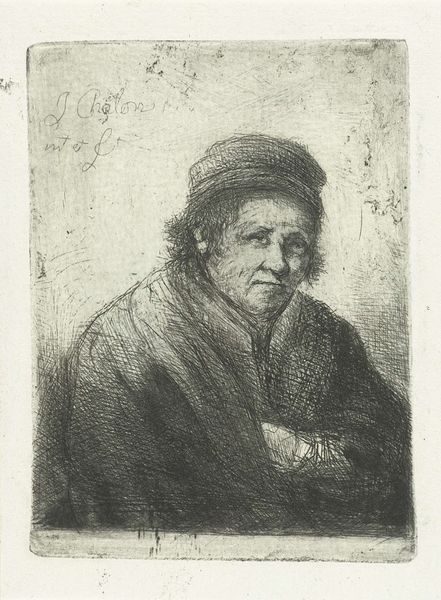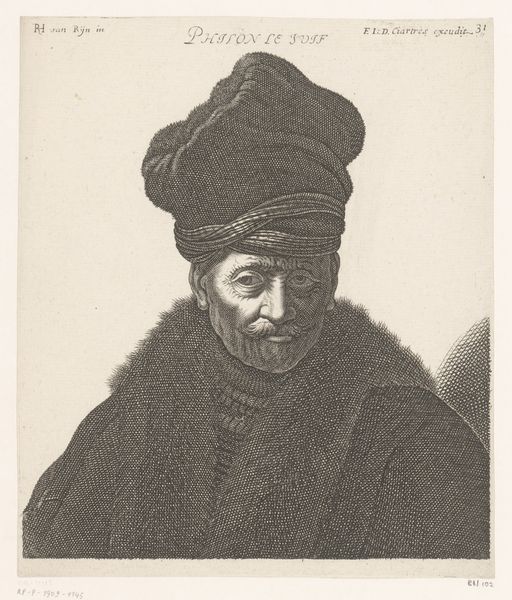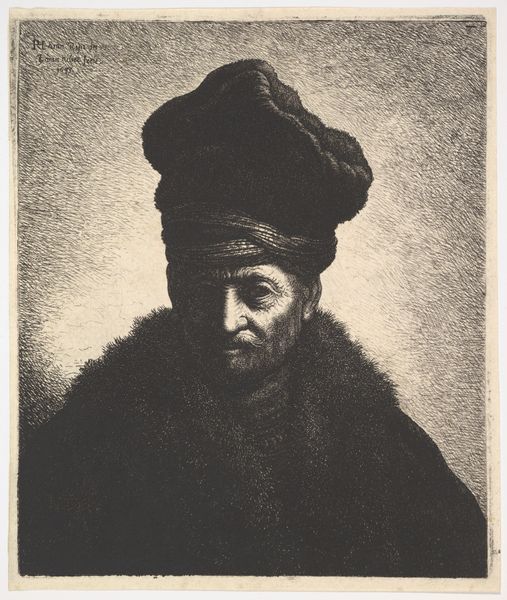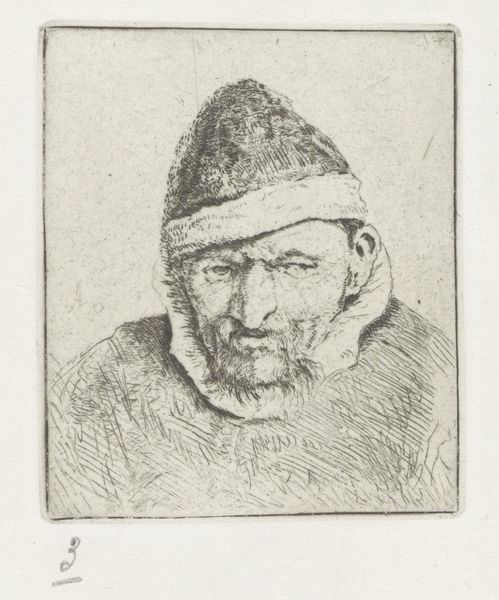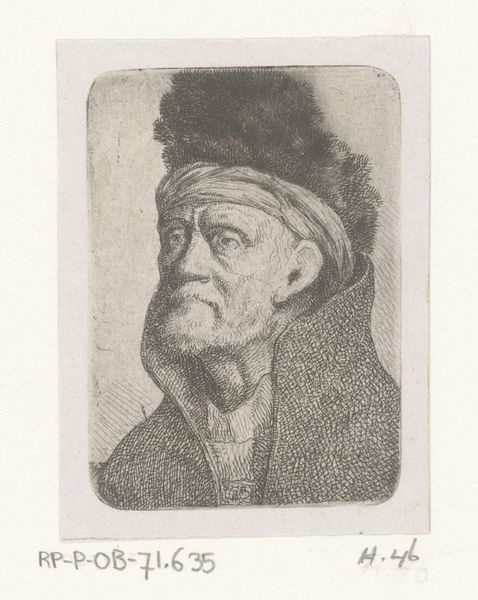
print, etching
#
portrait
#
baroque
#
dutch-golden-age
# print
#
etching
#
figuration
#
realism
Dimensions: height 76 mm, width 60 mm
Copyright: Rijks Museum: Open Domain
Curator: This etching, executed in 1630 by Rembrandt van Rijn, is titled "Man wearing a close cap: bust (the artist's father?)" and it now resides here at the Rijksmuseum. Editor: The mood that hits me right away is solemn introspection. Look at how that furrowed brow and slight downturn of the mouth communicate a world of untold stories and possibly burdens. Curator: Notice Rembrandt’s intricate etching technique here, the way he builds form and emotion. The light seems to emanate from within the figure, highlighting the face in a way that imbues him with a powerful presence, almost iconic. This etching style was emblematic of the Dutch Golden Age. Editor: It is striking how Rembrandt elevates an ordinary subject. I see social commentary in this rendering of an everyday person during a time of immense social change and unrest. The portrait becomes a study of the human condition, a challenge to idealized portrayals of nobility. Who was afforded visibility, who wasn't, and why? Curator: I see it also in terms of a broader tradition of family portraits; this representation might carry the visual echoes of Dutch ancestor worship where family members held considerable power. In some ways, it immortalizes not just an individual but also their place in a generational narrative. Editor: I'd counter that that even the fur-trimmed coat and cap indicate a particular class status during a period of expanding mercantile wealth. Perhaps the sitter would have used attire to visually emphasize his social standing, yet the artwork captures also an inner emotional depth. I perceive class consciousness and psychological probing together. Curator: Well, those fine lines in his face do convey volumes—the man’s very character, rendered in the delicate lines and cross-hatching, speak across centuries. He’s both intimate and unknowable. Editor: Absolutely. The figure stands as a poignant reminder of the interconnectedness of personal and societal narratives and offers us the opportunity to consider broader ethical concerns of representation and remembrance. Curator: Precisely! It encourages us to reflect on how portraiture has shaped our perception of both history and humanity through careful image analysis. Editor: Indeed, by challenging conventions, this artwork serves as a beacon for reimagining narratives about social equality, one etching at a time.
Comments
No comments
Be the first to comment and join the conversation on the ultimate creative platform.
